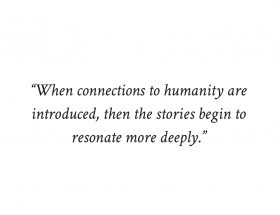The forces of isolationism and populism are gaining traction in many powers in the West, allowing the government of the People’s Republic of China to capitalize on this shift in geopolitics.
However, it can be said that the government of the People’s Republic of China is capitalizing on this shift in geopolitics. The greatest examples of this are the Silk Road Economic Belt and the 21st Century Maritime Silk Road initiatives, launched by Chinese President Xi Jinping back in 2013, which culminated to form the One Belt and One Road initiative. Later dubbed the Belt and Road initiative, this massive two-pronged project draws its roots from the ancient trade route which connected Asia to Europe. According to the Council on Foreign Relations, it will require a total investment ranging between 1.2 to 1.3 trillion dollars and has been touted as the most ambitious infrastructure project in human history.
The BRI has been presented as an open arrangement in which all countries are welcome to participate. To date, more than 60 countries have agreed to participate or have shown interest in this monumental initiative, although interestingly enough no official list of nations exists. Numerous notable projects have been undertaken as a result of the initiative: a multipurpose port in Djibouti, a harbor and a port in Sri Lanka, and multiple energy production projects in Tajikistan, Azerbaijan and Bangladesh. The project requiring the highest investment since the inception of the BRI is the Chinese- Pakistan Economic Corridor (CPEC). It is a series of construction projects connecting inland China to the recently developed Gwadar Port on the Arabian Sea, which alone will require an investment of $68 billion.
The BRI will consist of a land route connecting China, through Central Asia, to mainland Europe. The Maritime Silk Road will start from Gwadar which opens up to southeast Asian countries towards the Pacific or through the port of Djibouti, will directly lead to Europe and the Americas. According to the World Bank, the BRI will reduce travel times by 12%, increase trade by as high as 9.7% and lift approximately 7.6 million people out of poverty. Economists and political analysts have however expressed concerns and doubted the sincerity behind President Xi’s motives to “break the bottleneck in Asian connectivity”. The initiative is viewed as China asserting its dominance on international trade, trying to pivot the world towards engaging in more trade with itself, and consequently away from the US. Some speculate the BRI to be a reaction to the slowing economic growth rate in China. This, coupled with increasing costs of production in the form of higher labor costs within the country, are causing the Chinese government to seek bigger export markets, investment opportunities and countries where costs are still relatively low. This may explain the massive Chinese investment in many underdeveloped African nations.
Given that much of the Chinese investment to these less economically developed nations is in the form of “low-interest loans” rather than aid grants, these criticisms are not baseless. Contrary to loans and other sorts of financing provided by the World Bank and the International Monetary Fund (IMF), Chinese loans have low requirements. This implies that Chinese banks will lend exclusively in Chinese Yuan to countries, even though the said countries might not have the capabilities to repay these loans. Thus, the entire matter becomes questionable. These infrastructure projects, financed by Chinese currency, are more often than not contracted by Chinese construction companies. , therefore acting as an immediate stimulant for the Chinese economy. However, if the country is not able to repay the loan, China can acquire a long-term
lease on the project in exchange for forgiving the debt, making it entitled to all the resources and revenue generated from it for the foreseeable future. In 2018, the Sri Lankan government found itself in a similar situation. They owed Chinese banks $13 Billion and were unable to guarantee payment. In return, China received a long-term lease over the projects, which had an expected future revenue stream of $14 Billion. CPEC is the largest project of the BRI so far, yet, Pakistan is facing a serious balance of payments crisis. To relieve the pressure from Chinese loans, in 2018 the government acquired more loans from Saudi Arabia, the IMF and China itself, falling deeper into the debt trap. In this way, China also secured a long-term lease on the port in Djibouti, an essential choke point of the Maritime Silk Road.
Under the Obama administration, the US tried to strengthen ties with Asian powers by introducing the Trans-Pacific Trade Deal. Despite this, under Trump, the United States has adopted a confrontational stance to Chinese advances in the region. The introduction of the Build Act led to the consolidation of the Overseas Private Investment Corporation, which has an investment portfolio of $60 billion. That sum pales in comparison to the $1 trillion pledge that China has made to the BRI. Coupled with the inflammatory statements made by US Vice President Mike Pence during the Asia-Pacific Economic Corporation Summit, (“[the US does not] offer a constricting belt or a one-way road….”), this does little to impede Chinese dominance on the global stage.
The BRI is the hallmark of a burgeoning Chinese dominance, and signals the rise of a new type of hegemony whose tactics, dynamics and motives largely remain shrouded in mystery. The Trump regime’s misdirected focus on bilateral trade with China is proof that the Chinese red herring is working: the Americans seem to be missing the larger geostrategic game afoot. The world is ill-equipped to deal with this second coming of Chinese neo-colonialism, and due to the increasing isolationist tendencies of the West, there may be no meaningful counterweight to China’s checkbook diplomacy.
art by Quinn Fagersten




